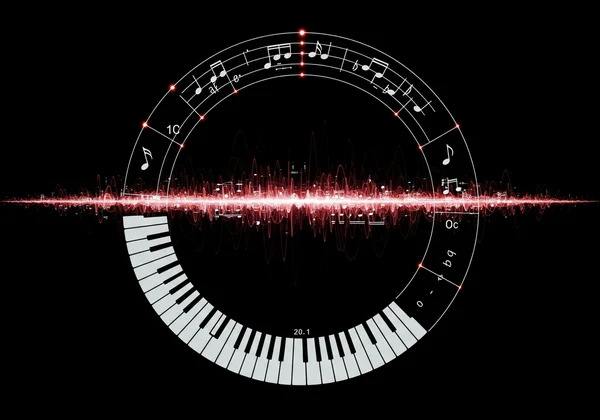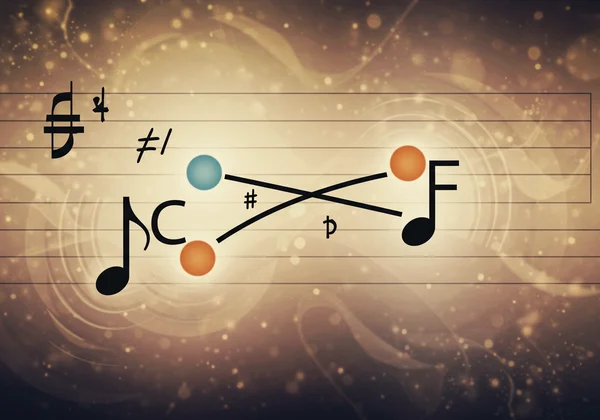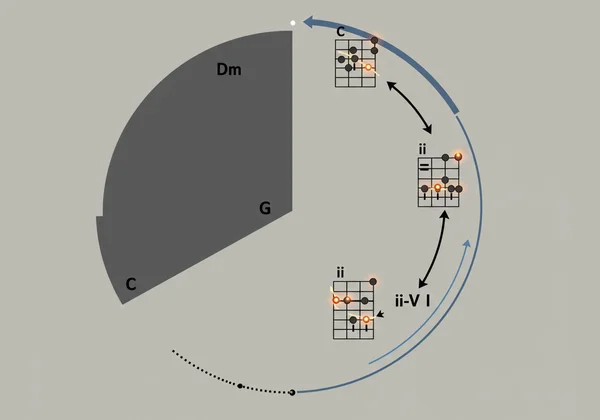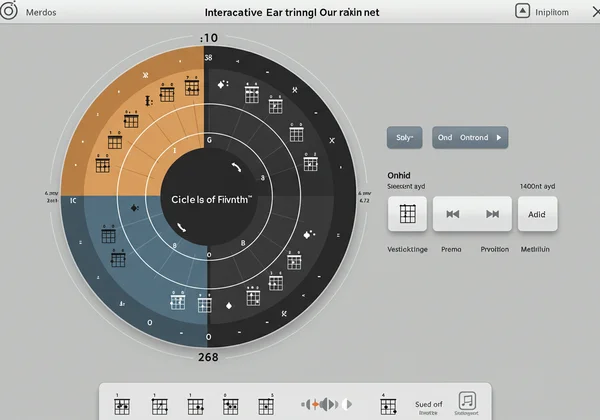Circle of Fifths Ear Training: Develop Your Musical Ear
Mastering your musical ear is the key to unlocking your full potential as a musician. It’s the bridge between reading notes on a page and truly understanding the music you play and hear. Many musicians see the circle of fifths as just a complex music theory chart for memorizing key signatures. But how can the Circle of Fifths specifically help with ear training? This guide will reveal how this incredible diagram is actually a powerful, intuitive map for developing relative pitch, recognizing chord progressions, and transforming your listening skills from passive to active.
If you’ve ever felt stuck trying to connect theory with sound, you're in the right place. We'll break down practical exercises and strategies that turn the circle into your personal ear training gym. Get ready to train your ears and hear music in a whole new way with our interactive learning tool.
The Circle of Fifths: Your Map for Musical Ear Development
Before diving into exercises, it's essential to understand why the circle of fifths is the perfect framework for aural skills. It’s not just a random collection of keys; it’s a logical organization of musical relationships that your ear can learn to recognize and predict.

Why Ear Training is Crucial for Every Musician
Developing your ear is not just for vocalists or jazz improvisers. Strong aural skills are fundamental for every music student, songwriter, and instrument player. The importance of aural skills translates directly into playing by ear, writing more compelling melodies and harmonies, and improvising with confidence. It allows you to identify the chords in your favorite songs, understand why certain notes work together, and ultimately express yourself more freely through music. Without atrained ear, you are merely reproducing sounds; with one, you are truly speaking the language of music.
How the Circle of Fifths Organizes Sound Relationships
The magic of the circle of fifths lies in its structure. Each step you take clockwise is a perfect fifth up, one of the most stable and fundamental musical intervals in Western music. This clockwise movement adds a sharp to the key signature, creating a slightly brighter, more "climbing" feel. Conversely, moving counter-clockwise is a perfect fourth up (or a fifth down), adding a flat and creating a sense of resolution or "settling."
Your ear can be trained to recognize the sonic quality of these movements. This visual map directly corresponds to circle of fifths sounds, helping you internalize the auditory distance between keys and chords.
Developing Relative Pitch & Hearing Key Centers with CoF
Relative pitch is the ability to identify a note by comparing it to another reference note. It’s a skill that can be systematically developed, and the circle of fifths is your best guide. It helps you anchor your hearing within a key and detect when that center of gravity shifts.
Practical Exercises for Relative Pitch Development
Start with simple interval ear training. Pick C major on the Circle of Fifths tool. The note G is directly to its right. Click on the C chord, listen to its root, and then sing or play the interval up to G. This is a perfect fifth. Now, try the same from G to D. Internalize the sound of that leap.

Next, try moving counter-clockwise from C to F. This is a perfect fourth. Use our tool to hear the C and F chords and practice singing the interval between their roots. By associating the visual positions on the circle with their corresponding sounds, you build a mental library of intervals.
Recognizing Key Changes and Modulations by Ear
Songs rarely stay in one key. Modulations, or key changes, add excitement and emotional depth. A common modulation is moving to the key of the dominant (the V chord), which is simply one step clockwise on the circle. For example, a song in C major might modulate to G major.
Practice aural modulation detection by listening to a piece of music and trying to feel that shift. When you hear a change, pause the music and try to guess the new key. Then, use our circle of fifths chart to see if the new key is a close neighbor to the original. This exercise will dramatically improve your ability for identifying key changes.
Circle of Fifths for Harmonic Recognition & Chord Identification
Beyond single notes, your ear needs to recognize entire chords and how they function together. This is where the circle becomes an indispensable tool for understanding and hearing chord progressions.
Identifying Diatonic Chords Within a Key
When you select a key on our interactive circle, you instantly see its most important diatonic chords. For any major key, its immediate neighbors on the circle are its subdominant (IV) and dominant (V) chords. These three chords (I-IV-V) form the bedrock of countless songs.
Practice diatonic chord ear training by picking a key, like G major. The tool will show you that its IV chord is C and its V chord is D. Click on each one to hear its unique quality and function. Train your ear to distinguish the stable sound of the tonic (I), the feeling of "going away" with the subdominant (IV), and the tension that begs for resolution from the dominant (V).
Unlocking Common Chord Progressions by Ear
Many popular chord progressions follow a predictable pattern on the circle of fifths. The famous ii-V-I progression, a staple in jazz and pop, is a clear counter-clockwise movement. In the key of C major, this progression is Dm (ii) -> G (V) -> C (I). Look at the circle: you'll see D, G, and C are all adjacent in a counter-clockwise path.

By visualizing these movements, you can start to anticipate and recognize them by ear. This skill is vital for songwriters looking for inspiration and players who want to improvise or learn songs more quickly.
Leveraging Our Interactive Tool for Ear Practice
This is where theory meets practice. Static charts are useful, but our interactive tool is one of the best online ear training tools available because it provides instant auditory feedback. Here’s how to use it:
-
Select a Key: Click on any key, say Eb major.
-
See the Chords: The tool instantly lists the diatonic chords: Ebmaj, Fm, Gm, Abmaj, Bbmaj, Cm, Gdim.
-
Listen and Learn: Click on each chord button to hear it played. Alternate between the tonic (Ebmaj) and the dominant (Bbmaj). Internalize that I-V sound.
-
Quiz Yourself: Hide the chord names and click on them randomly. Can you identify if it's the major tonic, the minor ii chord, or the major V chord? This is interactive music theory at its best.

Systematic Practice for Consistent Ear Training Improvement
Like learning an instrument, musical ear development requires consistent and intelligent practice. A few focused minutes each day are far more effective than a long, occasional session.
Daily Drills to Sharpen Your Musical Intuition
Incorporate these ear training strategies into your daily routine. Spend five minutes with our interactive Circle of Fifths tool. Pick a "key of the day." First, listen to the tonic chord until it’s fixed in your mind. Then, play the dominant chord and sing the interval back to the tonic. Next, try to identify the relative minor by ear before clicking to confirm. These short, focused daily music practice drills build strong neural pathways.
Integrating Aural Skills into Your Instrument Practice
Don’t isolate your ear training. Apply it directly to your instrument. When you learn a new song, don't just read the chord chart. Listen to the recording and try to identify the chord functions. Is that a I-V-vi-IV progression? Pull up the song's key on our tool and see if the progression follows a logical path on the circle. This instrument ear training approach makes theory immediately relevant and accelerates your overall musicianship.
Your Next Steps to a Sharper Musical Ear
You now have a clear roadmap. The circle of fifths is not a fearsome diagram to be memorized, but a dynamic, practical guide to hearing and understanding the language of music. By connecting its visual patterns with their corresponding sounds, you can systematically train your ear, improve your relative pitch, and master harmonic recognition.
The journey to a great musical ear begins with the first step. Start today by exploring our free interactive tool. Click through the keys, listen to the chords, and begin making the connections that will elevate your playing, writing, and appreciation of music forever.
Frequently Asked Questions About Circle of Fifths Ear Training
How can the Circle of Fifths specifically help with ear training?
The circle visually organizes keys and chords based on their harmonic relationship. This visual map directly correlates to how these chords and keys sound in relation to one another. By using the circle, you can train your ear to recognize the sound of moving to a "close" key (like C to G) versus a "distant" one (like C to F#), and to identify common chord progressions that follow patterns around the circle.
What is relative pitch and why is it essential for musicians?
Relative pitch is the ability to identify a note by comparing it to a previously heard reference note. Unlike perfect pitch, it's a skill that can be reliably learned. It is essential because it allows you to understand the relationships between notes, which is the foundation of melody and harmony. It enables you to play by ear, improvise coherently, and recognize chord progressions on the fly.
Can the Circle of Fifths Tool Be Used for Ear Training Exercises?
Absolutely. It's an ideal tool for it. The core feature allows you to click on any key and instantly see its related diatonic chords. Crucially, you can then click to hear each of those chords. This auditory feedback is perfect for drills like identifying chord qualities (major, minor) or practicing interval recognition between chord roots. You can try these exercises now.
How do I improve my ability to recognize chords by ear?
Start by focusing on the function of the three main chords in a key: the tonic (I), subdominant (IV), and dominant (V). Use our interactive circle to select a key and listen to these three chords repeatedly. Learn to associate the stable, "home" feeling with the I chord, and the tension of the V chord. As you get better, you can start adding the minor chords (ii, iii, vi) into your practice.